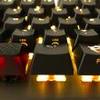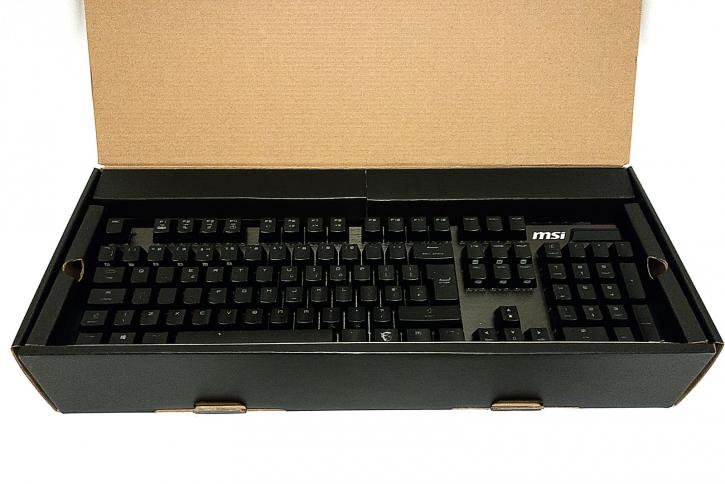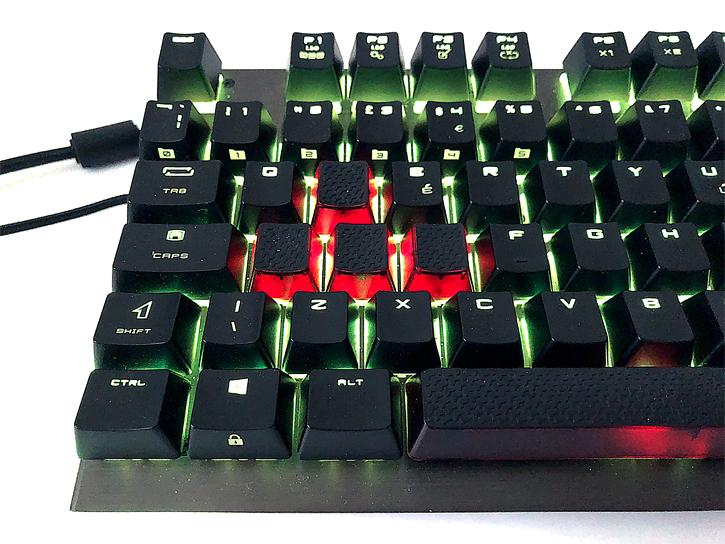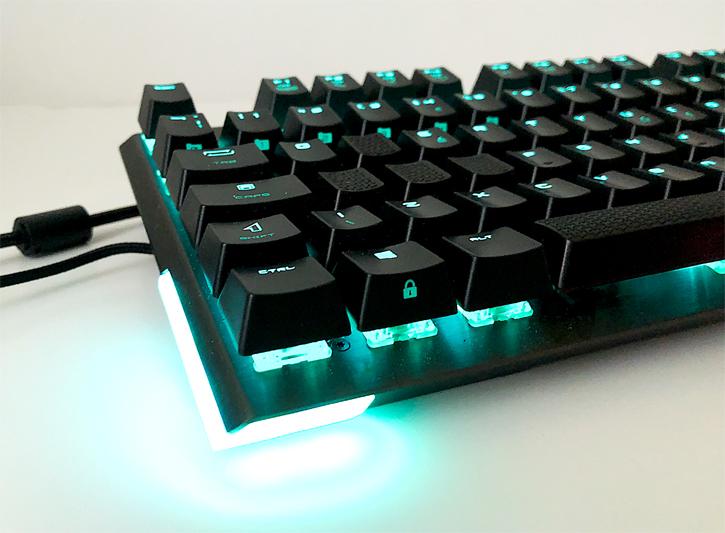MX Reds - The Gamer Switch
MX Reds - The Gamer Switch
Cherry is a company that has been around for quite some time, and they now have quite the diverse range of switches on offer. Further leaving the impression that this is a 'gamers' keyboard is the switch choice MSI have decided to implement here, offering either MX Silver or (as we know) MX Reds. Silver's are even lighter than red's to actuate, offering no tactile feedback. Personally, I do not like them, but that is because I also value a board's typing experience over anything else, not how it performs in games. I am more than happy to buy boards with the famously clicky MX Blue switches, and can game on them just fine. That said, I am not a professional gamer, and never will be. If you asked Fnatic or pro Overwatch players, they would likely come at this argument from a totally different perspective.
MX Reds are perhaps the 'go to' switch for most first-time mechanical keyboard buyers, offering 45g of actuation force, a linear response, and a fairly rapid 'bounce back.' In fact, the majority of the noise you will get from an MX Red equipped board is actually from the user 'bottoming out' the switch, i.e. so that the keycap hits the board. As you learn your board, your typing speed will increase and you will virtually stop bottoming out the keys altogether. For me, this takes about 4-5 days. Mech switches are desired by gamers/typists largely because they provide a much nicer 'feedback' when typing, and for that reason alone I will usually gravitate toward switches that provide feedback, like MX Browns or Blues. That is not to say that you cannot type well on Reds, just that they were not made for it.
If the above were not already too much (and I assure you, that was me condensing massively my enthusiasm for keyboards... nerdiest sentence I will ever type), then we can also look at the type of keycap MSI has chosen for their flagship board. I have to say that I am immediately a little let down here. MSI has chosen the cheaper ABS keycaps as default on the board, though the included ones as extras are of the more expensive PBT double-shot variety. Whilst ABS is not inherently bad, the cheaper material does mean they have a tendency to pick up oils/dirt from your fingers much more quickly. PBT caps feel notably nicer to use as well, offering a thicker plastic and heavier 'feel,' with more weight to them. Whilst it's nice that MSI has included PBT caps in the accessories box, their inclusion across the entire board would have been nice for $160 USD. In fairness to MSI, other top end keyboards from the other big manufacturers (e.g. Asus with the ROG Claymore) do not use PBT caps either. I would imagine that this is a costings issue, and the inclusion of the featureset present on boards like the GK80 and Claymore mean that ABS has to be used to keep the price down to a reasonable level.
Typing Experience
Aside from a gaming mouse, this is perhaps the most subjective thing a reviewer will ever cover. The GK80, for the record, has a bit of a battle ahead with this reviewer. First up, I don't, especially like Cherry Red switches. Secondly, I am a stickler for PBT keycaps. So, with that in mind, what is it like?
Well, actually, I was surprised. Whilst the keyboard may be fairly busy in terms of functionality assigned to each switch, the actual spacing of the keys and their 'height' was surprisingly easy to get used to. My normal acid test (aside from day to day use) is running the 'Ten Fast Fingers' test, which I will link here. It simply asks the user to type a sequence of random words over the course of one minute, giving you a result in words per minute at the end. With my Topre Realforce board at work, I can achieve around 101 WPM, which is relatively quick. It's not a perfect test, but it's a reasonable yardstick to measure how well a keyboard is laid out, i.e. how well it can conform to what 'X' believes is the standard/common layout. With the GK80, after a couple of days (it only seemed fair to familiarise myself first), I managed INSERT WPM HERE.
That, however, doesn't give a perfect indication of what this board is like to use. Whilst I will get to the additional features later, the board is pleasant enough to type on, and I was reasonably error-free after a couple of days. Whilst, not the high praise the readers may be searching for, remember that I 100% have a preferred switch type, board, and even keycap to use. I found the layout to be absolutely fine, and whilst I won't be able to use the board on my relatively small desk, it's a good enough experience that I would happily recommend it to someone looking for a high-end board that feels nice to use day to day. That is said, for the record, independently of anything else. Here we are talking about the typing experience alone, and nothing more. The light force required by MX Reds to use also means that sore wrists/fingers (which can be a problem with heavier switches) are not a problem here.
Before we move on, I think we should take a quick look at MSI's included wrist rest, basically a necessity whether or not you're charging 160 USD for a keyboard. It's a little skinnier than the one bundled with Corsair's gaming orientated keyboards, but it does the job. If I had a criticism, and I do have one, it's that this rest is actually free-standing, and therefore doesn't attach to the base of the board via clips/magnets. You had better put the board on a rough surface, then, otherwise, it'll slide. I'll confirm that it did slide around a little (the rest) if not on a higher friction surface. This is a bizarre decision from a design perspective, and I cannot understand why it wasn't caught in QC or changed for a rest that at least catches. When on a rough/grippy surface, however, the rest is actually very comfortable and is exceptionally sturdy.
Next, why don't we take a look at a potentially burning question? Just 'why' would you spend this kind of a money on a keyboard? Yeah, we're going to discuss that on the next page though,





